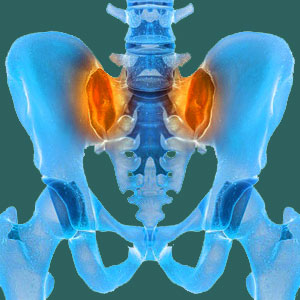
The iliac gapping test, also commonly called the transverse anterior stress test, sacroiliac joint stress test or SIJ distraction test, is one of several diagnostic evaluation maneuvers used to identify various SIJ disorders. It should be known that the sacroiliac distraction test is not definitive by any means and is most reliable when used to provide evidence towards a diagnosis of SIJ dysfunction, injury or disease along with other diagnostic evaluation methods.
Sacroiliac distraction testing is highly customizable to each care provider’s specific preferences. Although all the techniques seek to distract the anterior SIJ in order to ascertain joint function and observe whether the manipulation produces pain, the actual way that the test can be performed is highly variable.
This essay details the application, technique and usefulness of the sacroiliac joint stress test, more commonly known as the SIJ gapping test. We will provide facts that are crucial for both patients and caregivers to understand regarding the use and accuracy of this common diagnostic test.
What is the Iliac Gapping Test?
The test does exactly what its name describes. It gaps the joint to check for the level of flexibility, as well as to determine if the joint is a source of pain upon movement. There are several ways to perform the test, but most have several things in common. The most common method places the patient supine on a table, with the examiner standing next to them. The examiner will use both hands to push down on the iliac and see if pain is produced by this motion. The examiner can also rock the iliac a bit side to side to check for symmetry of ROM, as well as tightness or laxity on either side.
The SI distraction test can also be performed on the posterior joint by reaching under the patient on each side and lifting upwards at the iliac in similar style as the standard test. Once again, this motion can evaluate the presence of pain, as well as areas of abnormal tension or motion on either side of the sacroiliac joint.
Iliac Gapping Diagnostic Evaluation
The gapping test is certainly far from accurate as a sole method of diagnosis. It is best utilized as part of a combined evidence gathering evaluation to determine if the sacroiliac joint might be the source of pain. Other notable tests that are complementary include the iliac compression test, the FABER or Patrick test and the thigh thrust sacroiliac test.
Additionally, a full medical exam should be performed and various other evaluations should be completed in terms of general flexibility and physical ability in order to better focus on or rule out the SIJ as the possible source of symptoms.
No sacroiliac joint test will verifiably confirm any type of suspected SIJ diagnosis. We have seen this time and time again in patients with very severe visualized degeneration with no pain and patients with highly acute joint dysfunction who did not demonstrate discomfort during this exams.
Iliac Gapping Test Facts
It should be known by both examiners and patients alike that the diagnosis of sacroiliac joint conditions is highly subjective. Many patients are misdiagnosed in one of 2 possible ways:
Some patients have SIJ issues, yet are told they are actually suffering from lumbar spine or hip problems instead. Since lumbar and hip joint degeneration are universal, it is easy to get patients on-board and justify the most invasive forms of treatment, like spinal fusion and hip replacements. Treatment results are obviously going to be abysmal, since the condition treated is not the actual source of pain.
Other patients are told that they have sacroiliac issues, especially if tests like the gasping test all create positive results for pain. However, the true source of pain resides elsewhere and is merely affects the SIJ through some mechanism. Treatment for the SIJ will fail to relieve the majority of pain, which might actually reside in the lumbar spine, paraspinal musculature, hip joint or might be a one of the nonstructural mindbody pain syndromes which have become such an epidemic problem in the modern healthcare sector.
Sacroiliac Joint Pain > Sacroiliac Diagnosis > Iliac Gapping Test





